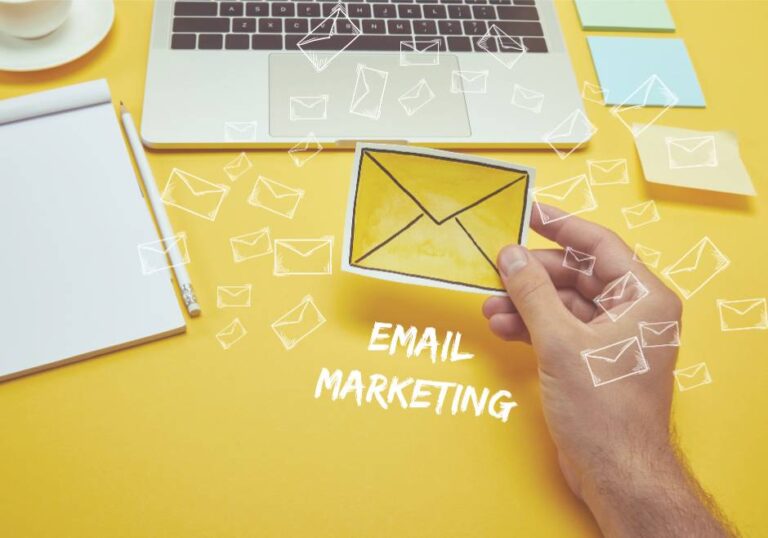If you’re building a business, your email marketing strategy matters more than ever. Email is one of the simplest ways to stay connected with your audience, build trust, and gently guide them towards becoming clients.
In my recent article — Email Marketing Strategy: Your Secret Weapon
— I explained why email is still the most powerful way to create consistent clients. Now let’s go one step further and look at the 10 most effective types of email marketing you should know.
These are practical, tried-and-tested email types you can start using right away — no complicated tech or marketing jargon..
1. Welcome Emails: The Perfect First Impression
Welcome emails are your chance to make a great first impression. They’re sent right after someone joins your list.
They usually:
- Thank your subscriber for signing up
- Tell them what to expect next
- Deliver a freebie if you offered one
Best Practices
- Be personal: Use their name and a warm greeting.
- Be clear: Let them know when they’ll hear from you.
- Include a simple CTA: Like visiting your website or following you on social media.
A friendly welcome email helps new subscribers feel connected from day one.
Think of it as rolling out the red carpet for your new audience!
2. Email Newsletters: Your Regular Catch-Up
Think of email newsletters as your regular coffee catch-up with your subscribers. These emails keep ongoing communication flowing and keep your audience in the loop.
Think of newsletters as your regular coffee catch-up with subscribers. They keep the conversation going and your business top-of-mind.
Why They Work
- Maintain regular communication
- Build trust and loyalty
- Share useful updates and insights
Content Ideas
- Repurpose your latest blog post
- Share helpful industry news
- Offer subscribers exclusive content or early access
Adding your own personality makes newsletters feel like a personal note rather than just another marketing email.
3. Dedicated Emails: Focused & Clear
Dedicated emails have one job: to promote a single offer, event, or piece of content.
They work well because they are laser-focused — no distractions, just one clear message.
Example
Imagine a simple email with one image, a short message, and a clear button saying “Join the Workshop.” That’s it.
Keep the design clean and make your call-to-action easy to find!
4. Lead Nurturing Emails: Build Relationships Over Time
Lead nurturing emails are a key part of any email marketing strategy. They guide potential clients through their decision-making process, step by step.
How to Do It Well
- Segment your list: Group subscribers by interest or behaviour.
- Personalise: Use their name and send relevant content.
- Automate: Trigger emails based on their actions, like downloading a guide.
Sharing valuable resources — blog posts, short tips, or case studies — helps build trust and makes it easier for people to say “yes” when they’re ready to buy.
💡 Tool Tip: If you want to automate these easily, I recommend Systeme.io. It’s GDPR-friendly, beginner-friendly, and free to start — perfect for solo entrepreneurs in Europe.
5. Transactional Emails: Keep Customers Informed
These are the practical emails you get after taking an action — like order confirmations, shipping updates, or password resets.
They may not be flashy, but they are essential for a smooth customer experience. Keep them clear, accurate, and timely.
6. Re-Engagement Emails: Win Back Inactive Subscribers
Sometimes people stop opening your emails. Re-engagement emails are a polite nudge to remind them why they joined.
Examples
- “We’ve missed you — here’s what’s new.”
- “Would you still like to hear from us?”
Offer a small incentive or share something new that might interest them. The goal is to restart the conversation, not pressure them..
7. Brand Story Emails: Share What You Stand For
Brand story emails go deeper than just promoting an offer — they share your journey, values, and mission.
Tips
- Be authentic: Share why you do what you do
- Show personality: Use real examples and images
- Keep it short: Focus on one story at a time
When people connect with your story, they remember you — and are more likely to become loyal clients.
8. Video Emails: Increase Engagement
Videos grab attention and make your message feel personal.
Best Practice
- Use a static image with a play button and link to your video
- Keep the video short and relevant
- Make sure it loads quickly on all devices
Even a simple smartphone video can feel more human and engaging than text alone.
9. Review Request Emails: Gather Feedback
These are sent after a client buys a product or works with you.
Best Practices
- Send shortly after their experience
- Be polite and thank them for their time
- Make leaving a review simple (one link or button)
Collecting reviews helps build trust with future clients and gives you valuable feedback.
10. Referral Emails: Encourage Word-of-Mouth
Referral emails turn happy clients into ambassadors.
Offer a small thank-you — a discount, bonus, or free resource — when they refer a friend. This grows your audience and rewards your existing clients at the same time.
Final Thoughts
All ten of these email types work together as part of a strong email marketing strategy. You don’t need to use them all at once — start with a welcome email and a simple newsletter, then add more over time.
If you want a step-by-step guide to creating a simple strategy, check out my post: Email Marketing Strategy: Your Secret Weapon.
And if you’re ready to get started, I personally use Systeme.io for all my email marketing. It’s affordable, easy to use, and includes everything you need in one place.
Happy emailing!

